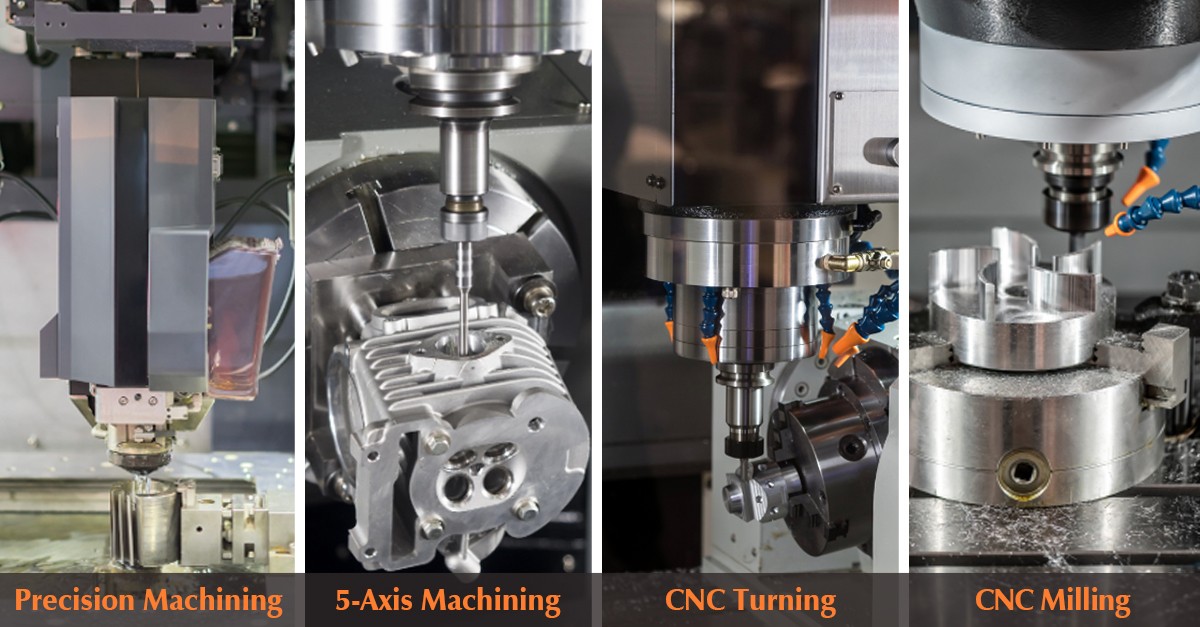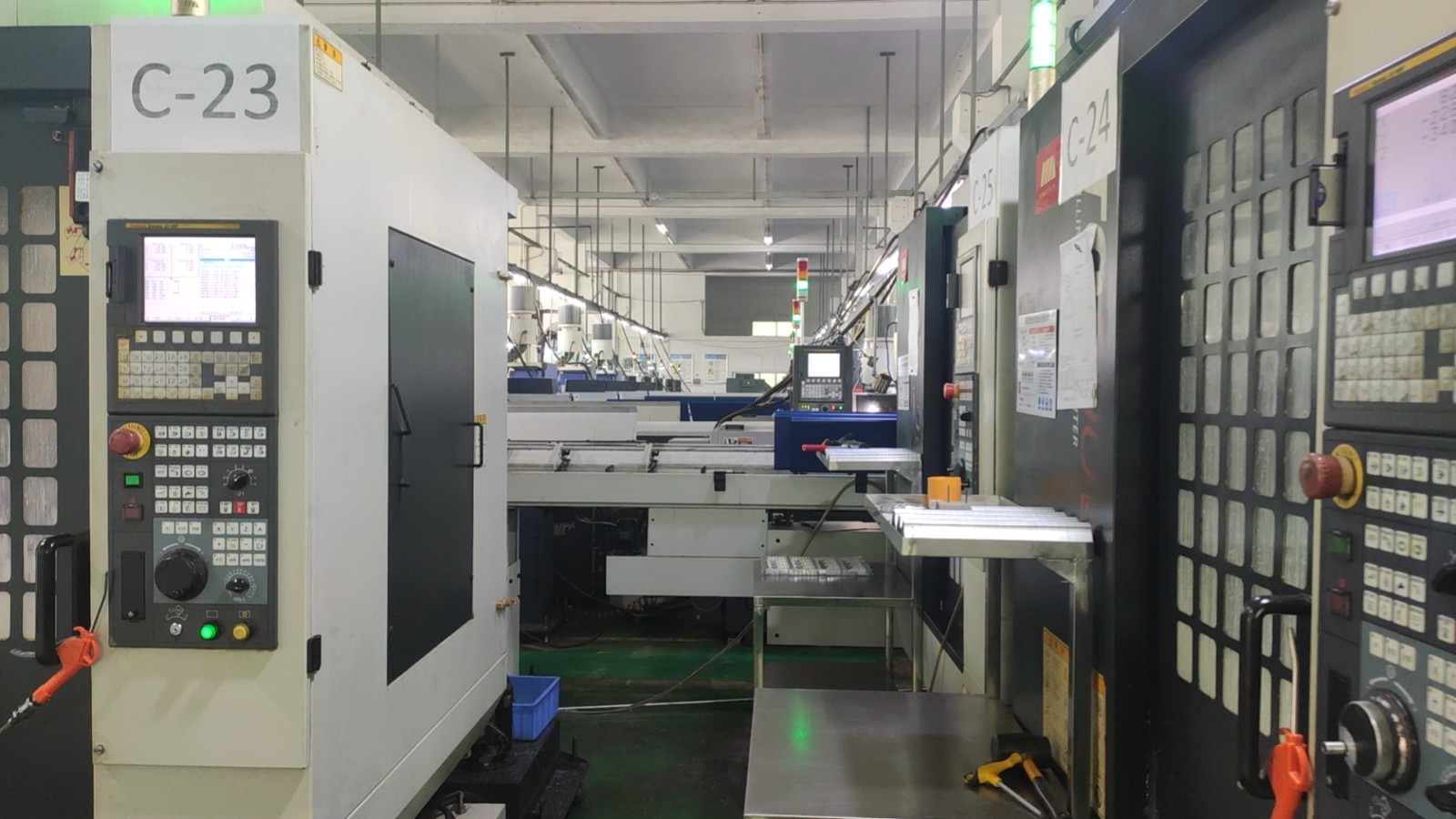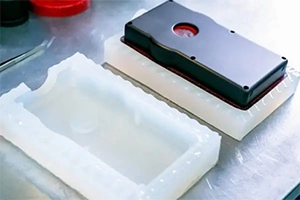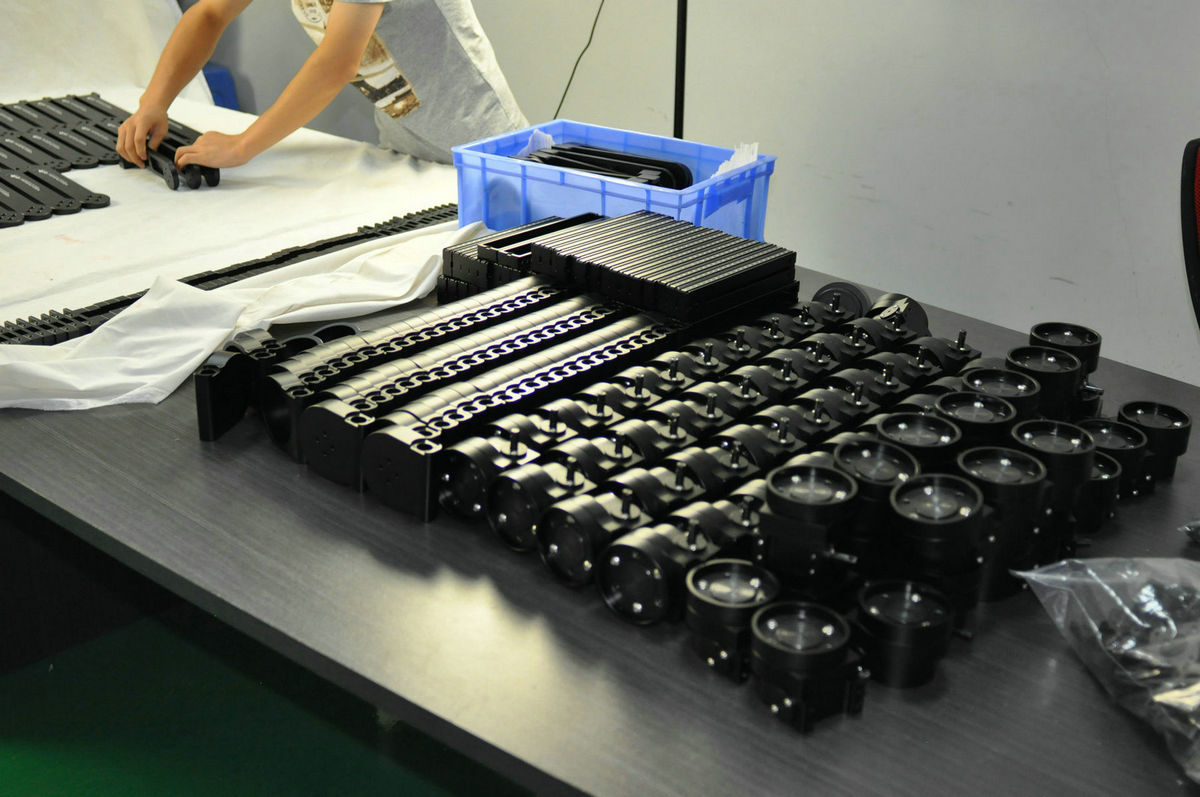Latest news
-
What is Die Casting? Die Casting Overview
January 23, 2024 -
Guide for Vacuum Casting Process
January 16, 2024 -
Comprehensive Guide about Rapid Prototyping and Low Volum Manufacturing
January 09, 2024 -
Congratulations! Noble Passed The Certification Of "Shenzhen Specialized, Special And New Small And Medium Enterprises"
October 11, 2023
Comprehensive Guide about Rapid Prototyping and Low Volum Manufacturing
What is Rapid Prototyping Service?
Rapid prototyping is the process of creating a physical sample of a new product design concept. This is done as a preliminary step before final production and is particularly beneficial when ensuring that the finished product looks, feels, and performs as anticipated. Rapid prototyping is used by new product developers for a variety of reasons. They are used for functional testing, approvals, design revisions, crowdfunding campaigns, trade show models, and as a stepping stone to low-volume manufacture. Prototypes frequently inspire re-designs, refinements, and other changes that would not have been visible from a computer graphic; therefore, they're useful for optimizing a design before committing resources to greater volumes. Correcting design flaws early in the development process can more than offset the cost of the prototype, making them sensible investments.

Advantages of Rapid Prototyping
Rapid prototyping assists you in making the most of this stage of the product development cycle. Working with professional engineers has various advantages, including:
Reduce Cost
Rapid prototyping allows you to swiftly and efficiently turn your concept into a test subject. Early in the development process, time-saving methods get you one step closer to a finished product that pays for itself. Whether you're a well-known global brand or a tiny firm, any cost-cutting measure can boost your bottom line.
Supporting Functionality Testing
Your prototype accurately depicts how your product looks and functions. Testing and retesting allow you to fine-tune your ideas and transform them into successful solutions that are more likely to succeed. Does it provide a good user experience? Is it achieving your objectives? At this point, you can identify characteristics that require additional improvement and prospective areas for expansion.
Reduce Risk
If your product designers identify significant concerns during the testing phase, these crucial design defects can be addressed before your product is released to the public. It is considerably easier to correct a prototype than it is to fix a product that has already been sent to customers. A thorough review of your design reduces the likelihood of failure in the long run.
Save Time
Rapid prototyping is a valuable method for saving time during the development process by quickly creating and iterating prototypes of a product or solution. It allows you to validate ideas, collect feedback, and make necessary improvements before investing significant time and resources in final implementation.
Rapid Prototyping Factory- What Kinds of Services are Included in Rapid Prototypes?
Various technologies are available for rapid prototyping in manufacturing, including layered additive manufacturing, high-speed machining, casting, molding, and extruding. Additive manufacturing is the most popular process for rapid prototyping. Traditional processes include subtractive and additive manufacturing. Subtractive manufacturing carves a block of material to create the desired parts, while additive manufacturing applies solid or liquid material to the desired shape. You can select from a variety of rapid prototyping methods for your production requirements, depending on the rapid prototyping firm you deal with. Distinct processes have distinct benefits, giving your manufacturing company flexibility and variety.

Types of Rapid Prototyping
●CNC Prototyping
CNC prototype machining is a good alternative since it can produce modest quantities of a prototype in a reasonably short time when compared to other technologies. CNC prototype machining makes it simple to create many types of prototypes. Appearance prototypes, for example, can offer visual information about how the final element will look or behave. However, functional prototypes require greater tolerance and a greater emphasis on product structure and stability.

●Advantages of CNC Machining for Prototypes
Cost-effective
If you only require a few prototypes, CNC machining is the most cost-effective alternative. Unlike injection molding, which may take many months to prepare the mold and tolerances, CNC prototype machining can begin immediately after the layout and tolerances are established.
High Tolerance
Another feature that contributes to the rapid development of prototypes is their large tolerance ranges. Unlike 3D printing, your prototype can be as intricate as the end product. This is a significant benefit for those who intend to use the prototypes for structural and functional testing.
High Restoration
CNC machined prototypes, as opposed to 3D printed prototypes, have numerous similarities to the product. Because machining centres are completely capable of generating end-use parts and prototypes, prototypes that are near to the final product can be made. One of the reasons engineering metals are favoured for prototyping is their exceptional machinability. This means that engineers can utilise the same or similar materials for prototypes and final parts. Furthermore, unlike printed parts, machined products are generally stronger and do not have any weak points along specific axes. However, the machining process can also be used to duplicate other operations, such as sheet metal shaping.
●Vacuum Casting
Vacuum casting is a manufacturing method for making accurate prototypes or low-volume goods. Under vacuum, liquid materials are injected into a silicone mold to ensure flawless replication of tiny features and equal material distribution.

●Advantages of vaccuum casting for Prototypes
Fine details and textures are properly captured by vacuum casting.
Fine details and textures are properly captured by vacuum casting.
It enables material flexibility by utilising several polyurethane resins.
Vacuum casting is a cost-effective way for creating tiny quantities.
Prototypes and small-batch production have short lead times.
Design flexibility with sophisticated parts and complex geometry.
Vacuum-cast prototypes are useful for testing and validation before to production.
● Injection Molding
Rapid injection molding injects thermoplastic resins into an aluminum mold, producing strong, high-quality parts. It is the industry standard for plastic part production and allows for material flexibility in prototyping.
●Advantages of CNC Machining for Prototypes
Molded parts are created using an array of high-quality materials, have an exceptional surface finish, and serve as an excellent indicator of manufacturing feasibility during the production process.
●3D Printing Services
Rapid prototyping comes in various forms. Depending on your requirements, each bundle will provide you with different features. Choosing the proper fast prototyping type for your production is critical to achieving the greatest results from your manufacturing procedures. Before deciding on the best solution for your manufacturing process, you should consult with the quick prototyping firm with which you are working. The following are the various types of fast prototyping:
1.Stereolithography (SLA)
SLA is an industrial 3D printing or additive manufacturing technology that uses a computer-controlled laser to produce parts in a pool of UV-curable photopolymer resin. The laser is used to trace and cure a cross-section of the part design on the liquid resin's surface. The solidified layer is then lowered just below the liquid resin's surface, and the procedure is repeated. Each newly healed layer bonds to the layer underneath it. This technique is repeated until the part is finished.
●Advantages of SLA for Prototypes
Creating smooth surfaces for your prototypes.
Providing precise dimensions and measurements for prototypes.
It is simple to add some post-processing to your prototypes, such as painting.
Fast and low-cost production process and materials.
Resistance to moisture and heat, making your prototypes suitable for long-term use.
2. Selective Laser Sintering (SLS)
The selective laser sintering process uses a powder bed to construct a model on many layers by heating and sintering the powdered materials with a laser. Metal and plastic prototypes can be built using SLS. The strength qualities of SLS parts are superior to those of SLA parts. Because the end product's surface is rough, SLS parts will require an additional finishing procedure. This method can be used if you want to create tougher or more durable prototypes or pieces for your project.
●Advantages of SLS for Prototypes
SLS parts are more accurate and durable than SLA parts, suitable for functional testing, and can make durable parts with complex geometries.
3. FDM or Material Jetting
To create a finished prototype, FDM employs an extrusion technology that melts and re-solidifies thermoplastic resin (ABS, polycarbonate, or ABS/polycarbonate hybrid) in layers. It is stronger than binder jetting and may be of limited value for functional testing because it uses genuine thermoplastic resins.
●Advantages of FDM or material jetting for Prototypes
SLS parts are more accurate and durable than SLA parts, suitable for functional testing, and can make durable parts with complex geometries.
The material jetting process is highly accurate and can help minimize the wastage of materials.
This method makes it easy to produce highly accurate components for prototypes.
It is capable of creating highly detailed parts up to 14 microns in size.
It allows for the application of multiple colors on prototypes, even in a single production phase.
The material jetting process can produce smooth surfaces for the hardware parts or prototypes created with it.
4. Selective Laser Melting (SLM)
Selective Laser Melting (SLM) is a popular process for building high-strength and complex parts. It is widely used in industries such as aerospace, automotive, and medical. Common materials used in SLM include titanium, aluminum, stainless steel, and cobalt chrome alloys. Therefore, if you need metal prototypes that require further production, SLM is the preferred rapid prototyping method.
●Advantages of SLM for Prototypes
SLM is a manufacturing method that allows for the creation of metal parts, components, and prototypes with superior strength, toughness, and durability.
It is highly accurate and can create small part details that are needed for further assemblies.
The melting process is easy to perform and offers a wide range of metal material selections.
You can use the autoclave method to sterilize the materials for selective laser melting.
The SLM process supports the use of complex geometric designs.
5. LOM or Sheet Lamination
LOM is less expensive and easier to perform than SLM and SLS. It does not necessitate any special regulated conditions. LOM is constructed from a sequence of thin laminates. Until the part is finished, each layer is delivered and bonded to the previous layer. This 3D printing approach allows you to easily manufacture larger components.
●Advantages of LOM for Prototypes
LOM, or sheet lamination, includes the elimination of the necessity for prototype support when using this technology.
The sheet lamination technique is much less expensive and faster for producing parts or prototypes.
There are no substantial inventory requirements for the materials used in the LOM process because they are widely available.
LOM facilitates the development of prototypes with complex shapes.
You may apply numerous details with extreme precision.
The sheet lamination method does not require much handling, which reduces stress for the workers.
6. Digital Light Processing
DLP, like SLA, uses resin polymerization. DLP is both faster and less expensive than SLA. DLP necessitates post-construction curing and the usage of support structures. Digital Light Processing enhances the SLA approach in several ways, including offering additional details for the prototypes you make. When compared to the SLA approach, you can also employ DLP to improve surface quality even more.
●Advantages of DLP for Prototypes
This method allows you to create detailed and intricate prototypes with ease. You can produce complex geometrical features, as well as hollow parts, using DLP. Additionally, you have the flexibility to choose from a wide range of materials for your production needs. DLP also offers a lower price per unit and a rapid prototyping process, which results in minimal wait times. Finally, DLP allows you to create prototypes with higher surface quality, ensuring a superior end product.
7. DMLS (Direct Metal Laser Sintering)
DMLS is a metal prototype and functional end-use component additive manufacturing method. DMLS use a laser system to draw on an atomized metal powder surface. It welds the powder into a solid where it pulls. A blade adds a fresh layer of powder after each layer and repeats the procedure. Because DMLS can employ most alloys, prototypes can be full-strength, working hardware produced of the same material as production components. It also has the potential to migrate into metal injection moulding if built with manufacturability in mind when higher production is required.
●Advantages of DMLS for Prototypes
DMLS produces dense and durable metal prototypes suitable for functional testing. It allows for designing internal features and passages that cannot be machined or cast. The quality of mechanically-formed parts is equivalent to conventionally-formed parts.
How to Choosing Rapid Prototyping Services?
It can be a challenge to select the best rapid prototyping service, particularly when time is a crucial factor. Having complex designs doesn't always mean shorter lead times. The materials utilized are also significant in terms of scheduling and budgeting, so it's important to have a clear understanding of all aspects before setting expectations. Here are a few things to consider:
Is my design too complex for an intricate and functional model?
Which is more important to me: the quality or speed?
What is it made from?
How important are strength and durability?
How closely should it match the final production version?
And then, you should also consider:
Consider the Product Purpose
The professionals who provide quick prototyping services cannot determine the objective of your design. That is something you must accomplish before starting a project. However, prototyping experts can assist you in determining the most productive, efficient, and cost-effective technique.
Think and Confirm the Project Deadlines
Many people consider rapid prototyping services to be fast manufacturing due to their expedited modeling capabilities. However, some orders may take longer than others. Your project deadlines are crucial, but multiple variables could affect the schedule. Plan accordingly.
Confirm the Project Budget
Choose versatile and cost-effective quick prototyping services. Discuss with your team how you might cut costs while keeping the integrity of your prototype design. Consider the impact of materials, accuracy standards, suppliers, ISO standards, and industry trends on your final costs.
What is Low Volume Manufacturing?
Making thousands or millions of identical components or products at a cheap cost per unit is the main goal of modern manufacturing theory, tools, and best practices. Custom and low-volume production demands a wholly distinct set of techniques, and trying to modify mass production systems to fit presents special difficulties for producers. Low-volume manufacturing refers to production runs that manufacture a limited number of parts, ranging from 10 to tens of thousands. Most traditional manufacturing methods, such as molding or forming, are designed for mass production, which involves producing large quantities of the same item. While these techniques are highly cost-effective for high-volume production (over 10,000 parts), they require standardized, expensive machinery and tooling, which rarely allow for product modifications. The cost is higher and the manufacturing time will be prolonged by weeks or months compared to large-scale production procedures like injection moulding. Manufacturers can employ high-volume orders to offset these large upfront capital expenditures through mass production, as the cost of each part drops when it is spread over thousands of pieces. The capacity to make specialised or highly customised parts at a reasonable cost is limited by the mass manufacturing procedures that are intended to generate identical parts in huge quantities.On the other hand, high-mix low-volume (HMLV) manufacturing, sometimes referred to as custom manufacturing, or the production of goods according to special requirements, has historically been done by hand in tiny workshops. Because of the larger percentage of manual labor and reduced throughput, this leads to a higher cost per part for custom items. For the same reason, mass customization—the production of huge quantities of uniquely customized goods—is rarely economically viable.

Advantages of Rapid Prototyping as low Volume Production
Reduce Cost
Rapid prototyping can remove exorbitant mould costs that need minimum orders to balance, lowering market entry barriers and promoting innovation in contrast to injection molding, which has significant mold costs.
High Speed
Small batch production can gain advantages by reducing development time and shortening production cycles from months to days or weeks.
Flexibility
Rapid prototyping can facilitate design changes, help achieve rapid iteration of products, create challenges, respond to customer feedback, and have lower costs.
Customization
Customers may create goods with never-before-seen design freedom with rapid prototyping, including intricate sections made of organic, lattice, or complex shapes, all at no extra cost.
Why Chose NOBLE as Your Rapid Prototype and Low Volum Manufacturing
Strong Manufacturing Capabilities
NOBLE provicing various manufacturing methods and advanced rapid prototyping manufacturing equipment and professional machinists, allowing our rapid prototyping services to exceed competitors in the same industry far and meet your immediate prototyping needs.
Perfect Supply Chain
NOBLE has excellent suppliers who can help us receive the materials needed for continuous production, and at the same time strictly control the cost of each product within an affordable range, effectively reducing your project cost.
Economical Price
Our efficient rapid prototyping system has enabled us to match our customers’ budgets or any offer with cost-effective solutions.
Consistent High Quality
We use high-quality input materials and maintain a high level of process stability to ensure reproducibility. We strive for continuous improvement to improve our manufacturing of goods, processes, and delivery capability.
Fast Lead Time
We have state-of-the-art low-volume manufacturing equipment and an experienced team to help us meet and exceed your delivery time and quantity expectations to ensure we deliver on time.
Related News
- What is magnesium alloy?2023-02-11
- What are the applications of aluminum alloy ?2023-02-11
- A Comprehensive Guide to CNC Machining: Understanding the Basics and Applications2023-05-15
- What is Precision CNC Machining?Gide for Begineers.2023-07-18
- What Is Sheet Metal Fabrication? A Guide To Sheet Metal Fabrication Processes: Material&Finishing2023-08-29
- Noble Won The Title Of "Innovative Small And Medium Enterprises"2023-11-06
- NOBLE Obtained Three Important Certificates Including Medical Device Production License2023-01-13
- NOBLE Participated in the COSMOPROF ASIA HONGKONG Showcasing Product Features And Scientific Research Concepts2023-11-22
- A Beginner's Guide to Injection Molding:Definition & Types & Advantages2023-12-28
- Congratulations! Noble Passed The Certification Of "Shenzhen Specialized, Special And New Small And Medium Enterprises"2023-10-11

